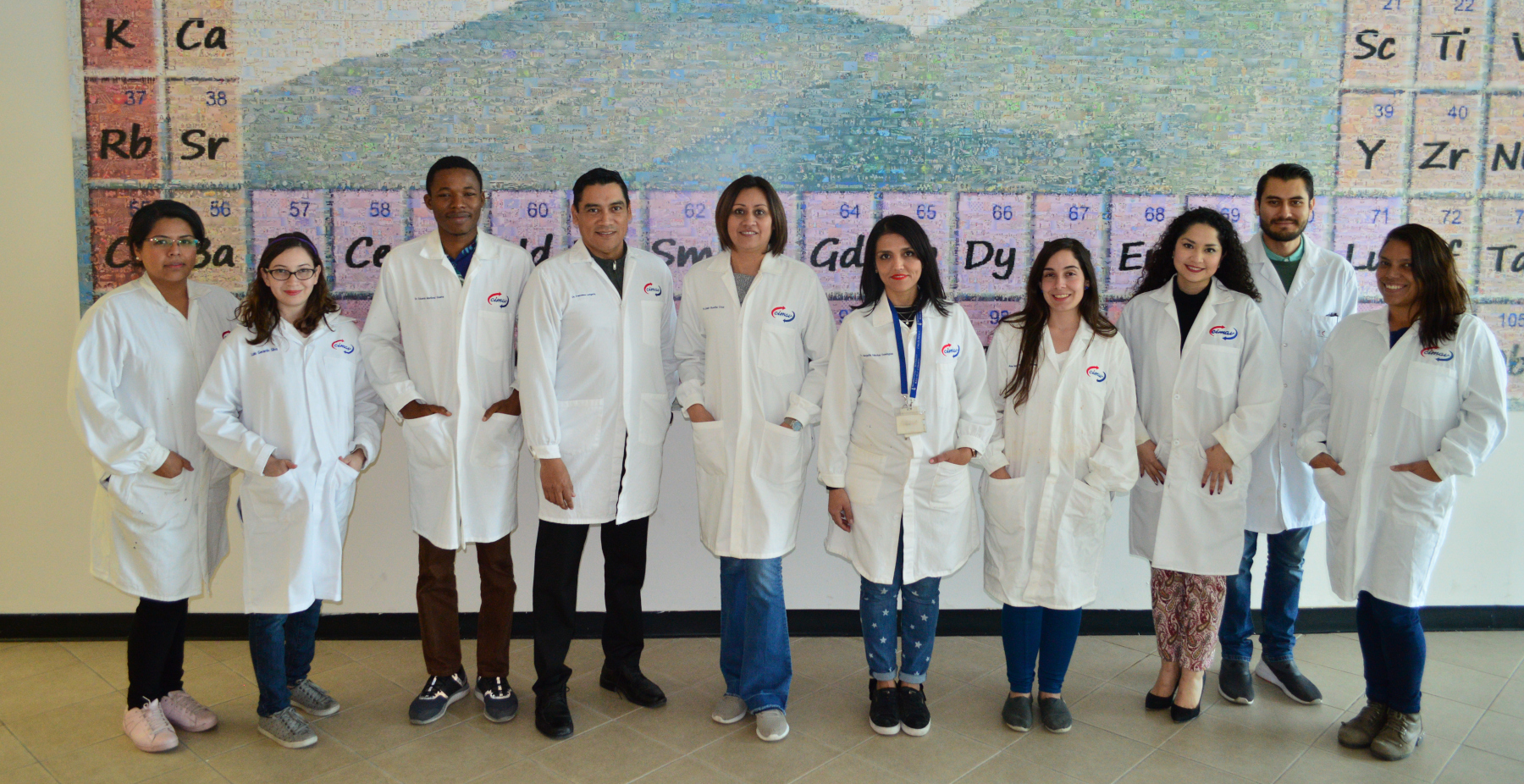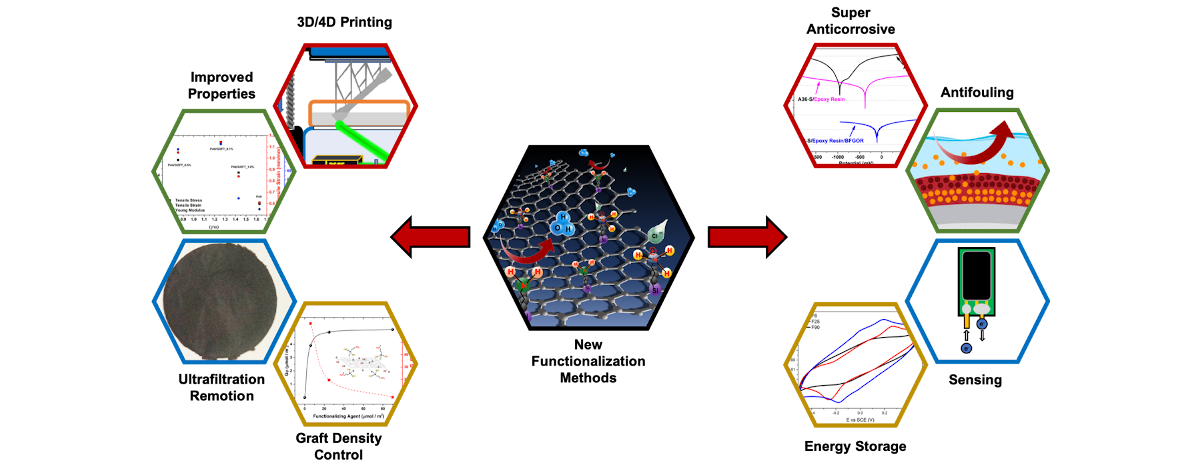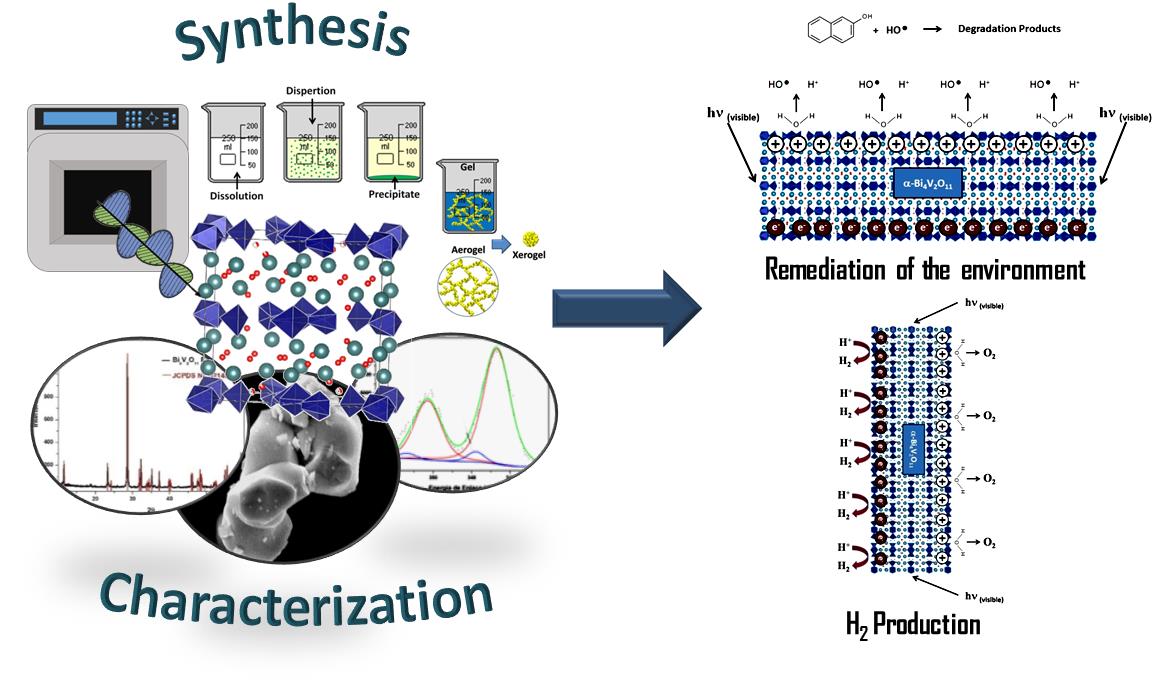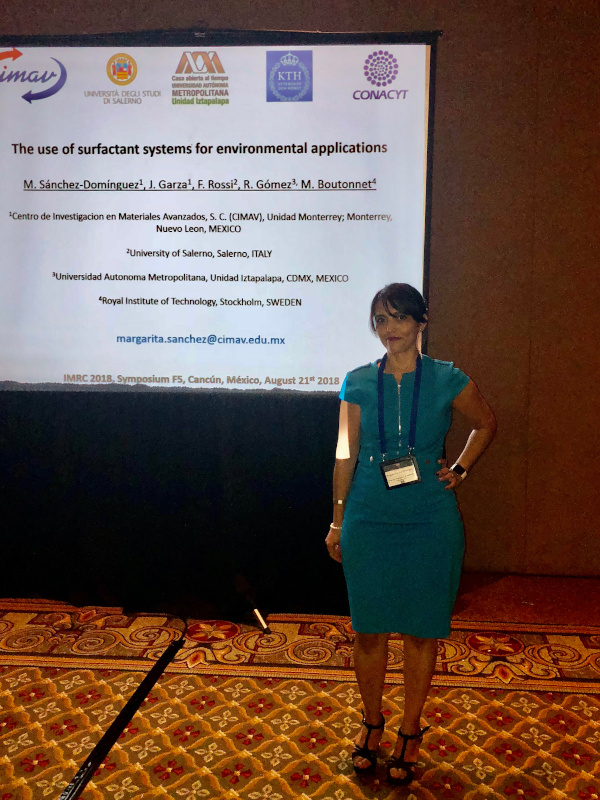
The Materials Chemistry area is formed by a team of research professors specialized in Colloidal Chemistry, Surfactant Systems, Synthesis and Processing of Polymers, Electrochemistry, Photocatalysis, 3D / 4D Printing of Polymers and Nanocomposites, Synthesis and Chemical Modification (Functionalization) of Nanoparticles and Nano / Superstructures, Graphene, Graphene Oxide, Macromolecules, Nanotechnological Formulations for Controlled Release, as well as Advanced Characterization Methodologies, among others.
The scientific and technological experience of the group of researchers in the area of Materials Chemistry, allows the generation of research in the frontiers of science, scientific projects of national and international cooperation, technological developments of high added value for the industrial sector, as well as the training of highly specialized human resources at Bachelor (Thesis), Master, PhD and Postdoctoral level, as well as national and international research stays.
The Materials Chemistry Area is represented by four main Research Lines:
The detergents and soaps that we use extensively with different industrial and daily life applications, are dual organic molecules (polar and nonpolar) called surfactants, with the ability to spontaneously form a variety of self-assembled nanostructures. A very well-known example of a surfactant aggregate is the micelle. These molecules allow us to bring together water and oil in a single phase through the formation of emulsions and other systems. Inside these structures, we can encapsulate active ingredients such as perfumes, drugs, flavors, etc. and release them in a controlled way. Surfactant systems are used in all areas; both in everyday products and in sophisticated applications ranging from electronic devices to controlled-release pharmaceuticals.
This has allowed us to collaborate with different industries in a series of projects in which we have developed specialized formulations for the pharmaceutical industry (controlled and prolonged release of drugs), home care, food, paints, plastic composites, materials for batteries, antibacterial, floor coatings and construction materials, among others.
Surfactants form nanostructures of various morphologies and sizes in a simple, controlled and tunable way. Once formed, we can use them as a reaction medium or “template” to synthesize nanomaterials. In particular, our group makes use of microemulsions (water-in-oil or W/O, oil-in-water or O/W, and bicontinuous), resulting in nanoparticles of highly controlled size and composition, or in the formation of 3D hierarchical superstructures, allowing us to go from nano to macroscale.
On the other hand, electrodeposition, electrophoresis and galvanic displacement methods also allow us to synthesize nano and hierarchical superstructures in an easy, fast, economical and controllable way.
Metallic hierarchical superstructures synthesized in bicontinous microemulsions for electrocatalysis

Plasmonic hierarchical superstructures as SERS substrates: Ag polyhedra (electrodeposit) and Au cages (galvanic displacement)

Research lines
- – Synthesis of hierarchical superstructures using bicontinuous microemulsions as templates and their application as electrocatalysts and SERS substrates.
- – Nano and plasmonic superstructures by electrodeposition, electrophoresis, and galvanic displacement; application as SERS substrates.
- – Microemulsions (O/W, W/O) as templates for the synthesis of inorganic nanoparticles for various applications (photocatalysis, catalysis, lithium ion batteries, etc.).
- – Design and synthesis of nanosystems for cancer therapies.
- – Formulations for controlled and prolonged release of drugs: hydrogels, micro / nanoparticles (polymeric, BSA), and niosomes.
- – Encapsulation of persistent contaminants (trichlorethylene) in micelles.
Group members
Postdocs: Dra. Keyla Fuentes, Dr. Darío Rivera. Doctoral Thesis: Elijah T. Adesuji, Edith Navarro, Ana Pinilla. Master Thesis: Andrea Zapata, Frida Aceves, Antuhan Hernández. Bachelor Thesis: Karla Basilio (IES Poza Rica), Esther Guardado (Universidad Autónoma de Sinaloa). International visitors: Mayra A. Castañeda Cataña (Universidad de Buenos Aires).
The design of materials includes the synthesis of polymers, as well as the functionalization of nanomaterials (nanoparticles, graphene, graphene oxide, etc.) with chemical groups that confer them a homogeneous dispersion in polymer matrices, and a suitable functionality for several advanced applications. In our research group of “Advanced Functional Materials & Nanotechnology,” we study and develop new chemical modification methods, to investigate how the influence of the type and concentration (graft density) of the functional groups present on the nanomaterial surface can modulate the macroscopic properties of polymers. The selective functionalization has allowed us to develop functional materials (functional polymer/nanomaterial) with super-anticorrosive properties, ultrafiltration, low friction, supercapacitors, sensors, energy storage, among others.
The synthesis of block polymers or copolymers and their subsequent functionalization illustrates an example in the design of proton exchange membranes for their potential applications in fuel-cells. The design of hybrid materials is another important factor in which we study the synthesis of polymers from the surface of any nanomaterial, or the incorporation of functional nanomaterials in polymers by extrusion, injection, or electro-spinning to investigate the thermal, mechanical, physicochemical properties, etc., of the resulting composites. 3D/4D printing of polymers allows us to develop surfaces with superhydrophobic properties, oil/water separation, etc., as well as composite structures with unusual properties.
The experience in the synthesis, modeling, and processing of polymers, as well as the methods of functionalization of nanomaterials, has allowed us to form students (Bachelor, MSc. PhD.), receive Postdoc and Researcher visitors, publish in journals of international recognition (JCR) and patents, participate in several national and international meetings (invited talks), leading national and international collaboration projects, as well as develop technological projects for the industry.
New Functionalization Methods of Graphene and Graphene Oxide

Synthesis and Processing of Polymers. Mathematical Modeling of Polymerization Kinetics via FRP, RDRP

Research lines
- – Functionalization of Graphene / Graphene Oxide / Nanoparticles and their Incorporation in Polymeric Matrices for Applications in Sensing, Super-Anticorrosive, Supercapacitors, CO2 Capture, Modulation of the Mechanical Properties of Nanocomposites, Coatings with low coefficient of friction, among others.
- – 3D-Printing of polymers and nanocomposites (VAT-polymerization) by stereolithography and its applications in the development of Superhydrophobic Surfaces, Oil-Water Separation, Smart Surfaces, etc.
- – Synthesis of Polymers and Block Copolymers by Reversible Deactivation Radical Polymerization (RDRP) using Nitroxides and RAFT
- – Processing by Extrusion, Injection, and Electrospinning of Polymers and Nanocomposites, as well as their physical-chemical characterization.
- – Mathematical Modeling of Polymerization Kinetics.
Distinctions
- – President of the Mexican Polymeric Society (2017-2019)
- – Invited Researcher at Case Western Research University (CWRU, 2019-2020)
- – Pacific Polymer Federation Council Member (2017-2023)
Advanced multifunctional materials with low environmental impact, obtained through simple, low-cost processes that can be used in multiple applications, such as:
- – Decontamination of water, air and soil.
- – Generation and / or storage of renewable and clean energy.
- – Smart surfaces.
Our research group has obtained these multifunctional materials through various soft chemistry synthesis methods such as SOLGEL, classical solvothermal method, microwave assisted solvothermal, co-precipitation, among others.
The synthesized materials have been tested as photocatalysts for the degradation of pollutants in water and air, as well as in electrochemical devices to store energy.

Research lines
- – Synthesis and characterization of advanced ceramic materials by soft methods to be used as photocatalysts in the degradation of pollutants in water and air.
- – Generation of renewable energy sources through heterogeneous photocatalysis.
- – Synthesis, obtaining and characterization of nanocomposites with possible applications in energy storage devices or on smart surfaces.


